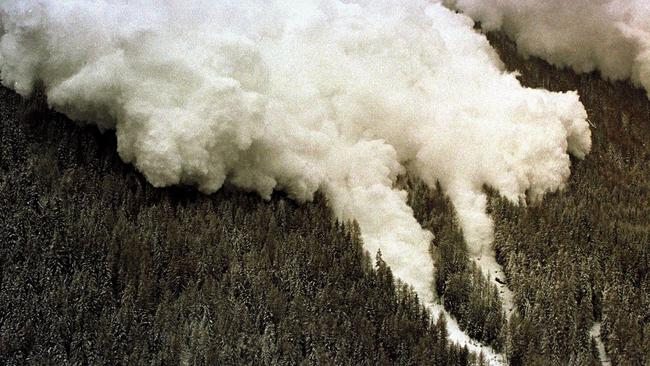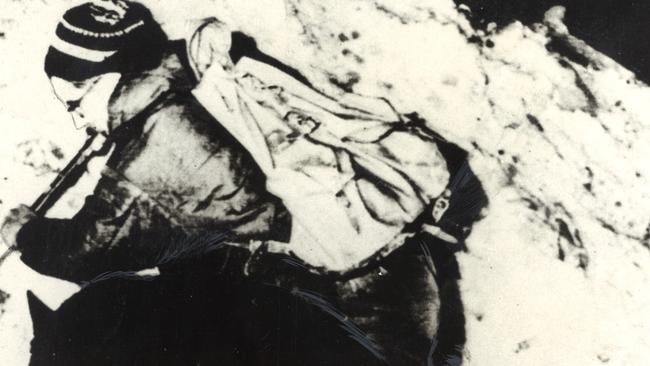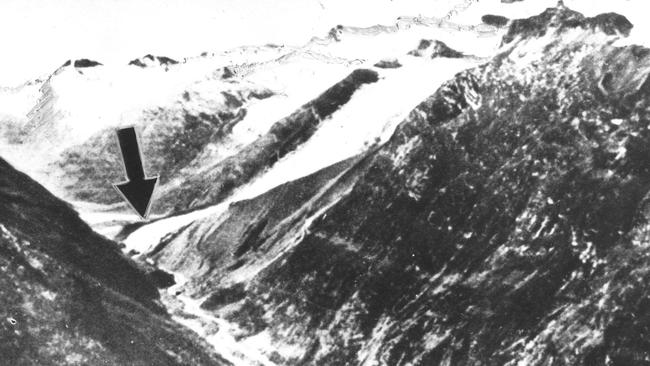White death came down on alps village with a roar that shook the earth
Fifty years ago the world was shocked by the death of construction workers in a Swiss avalanche

Today in History
Don't miss out on the headlines from Today in History. Followed categories will be added to My News.
Workers on the hydro electric scheme in the Saas Valley, high up in the Swiss Alps, had just finished up for the day and were settling down in their barracks when they were struck by an icy blast of wind. It bowled people over, flattened power poles and knocked down wooden buildings like they were matchsticks.
In the wake of the wind came a huge wall of ice, rocks and snow that tore through the small workers’ village burying almost 100 people.
The disaster, which happened 50 years ago this weekend, would claim the lives of about 90 people, one of the worst avalanche death tolls in Switzerland’s history.
SWISS PRIDE
Work on the dam had started in 1961, with a team of 400 Swiss, French and Italian workers. One of the major reasons for its construction had been to mitigate floods caused by meltwater from the Allalin glacier. Since the 17th century the spill of floodwaters from Mattmarksee (Lake Mattmark) had threatened villages in the valley below at least two dozen times. A dam would allow waters spilling over from Mattmark to be captured, preventing flash floods, but another benefit was that it would also provide electricity from a hydro electric plant. Cheap, clean energy especially through winter when it was needed most.
There were some concerns about the moving glacier dangling high above the dam, but it had not caused avalanches in the past.
In 1963, a team of experts examined the glacier during a period when it had been rapidly advancing, but deemed it no threat to the dam works below and work on the project continued.
Although some might have considered the construction an eyesore in what is otherwise a breathtakingly beautiful part of the world, the dam was a point of pride for the Swiss, an engineering marvel, part of a government initiative for hydro power.
It attracted bus loads of tourists, many of them from the holiday resorts Saas Fee and Saas Almagel several kilometres further down the valley. Some of them were visiting the site on August 30, 1965.

LETHAL ICE
What neither they nor the workers knew was that a great chunk of ice from the Allalin glacier was poised ready to snap off. It would later be understood that the glacier goes through cycles of retreat, followed every two to three years by rapid advances. In 1965 it began one of those advances which pushed the ice over a rock ledge.
It was thought this overhanging chunk of ice was disturbed by vibrations from the incessant rumbling of equipment in the valley below, as construction went on around the clock to get as much done as possible before the blizzard season. Day-shift workers had knocked off and were having dinner, with night-shift workers on their way to work. Others were resting in the barracks, socialising and playing cards.
Alois Hauser, a mountaineer from Zurich who was heading for a refuge hut high above the glacier, witnessed the moment the ice snapped. He said later it sounded like explosions, followed by a roar that shook the earth.

HELPLESS WITNESSES
Tourists on the dam wall also watched in horror as the ice rushed toward the workers’ camp, knocking over trucks and cars on the road down from the dam and flattening the camp. Miraculously, the dam and the tourists on it were spared.
Although the power was knocked out, a phone line stayed intact, enabling help to be summoned. Only five people were dug out alive. Some sources set the death toll at 88 although others report as many as 97 people died. More than 50 of the dead were Italian migrants.
Avalanches have been a constant danger in that part of the world. In the 1930s, a Commission for Snow and Avalanche Research was set up, primarily to protect soldiers stationed in the Alps after thousands had died during World War I. While research in the wake of disasters like the Mattmark Dam has helped to avert major disasters, avalanches still take lives in Switzerland. In 1999 Switzerland suffered a particularly bad season during which 1300 avalanches occurred, killing 17 people, including two in the ski resort of Evolene.
SWITZERLAND’S DEADLY RECORD
1618 the entire town of Plurs was buried by an avalanche, killed as many as 2500 people
1718 Two avalanches in one day flatten the town of Leukerbad,
killing 52.
1888 200 people are killed by avalanches in the Wassen Valley
1951 A particularly destructive avalanche season saw more than 90 people killed.
Originally published as White death came down on alps village with a roar that shook the earth



